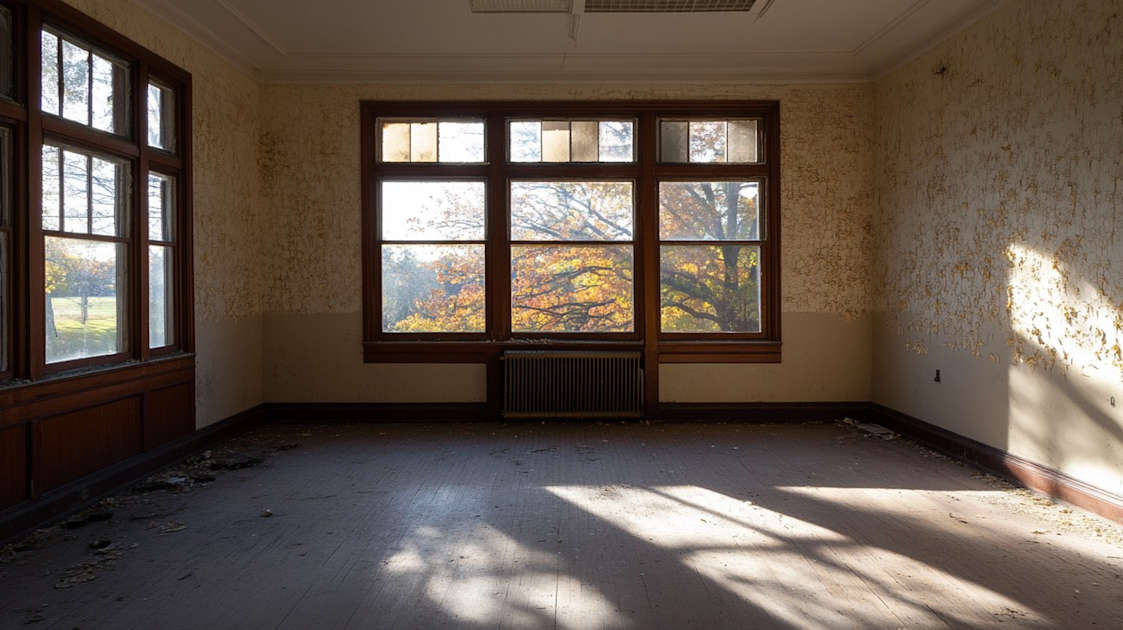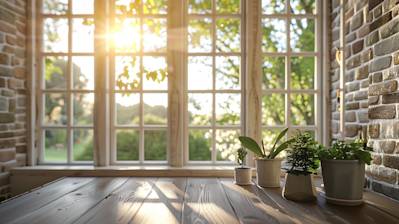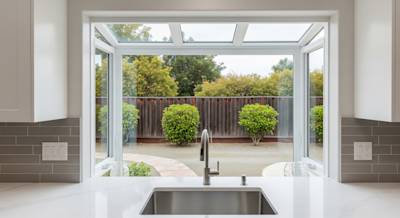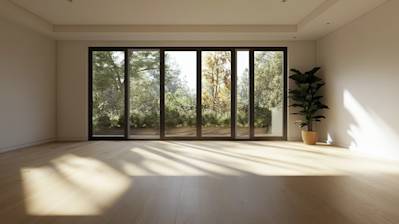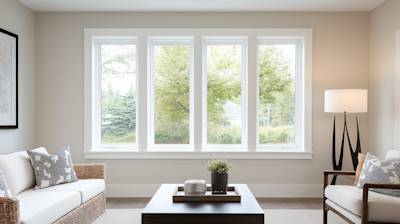Mold on windows is a common yet overlooked problem in many homes. As small black spots or fuzzy growths on window sills, mold is not just irritating to see, it can also cause health issues and damage the window infrastructure. This blog will delve into in-depth information about mold on windows, exploring why it happens and how to prevent it.
What is Mold? A Quick Overview
Mold is a type of fungus that thrives in damp, warm spaces. There are about a thousand mold species, but the most common ones found on windows are Cladosporium, Aspergillus, and Penicillium. Most homeowners tend to overlook mold growth until it starts becoming an eyesore or causes allergic reactions, such as sneezing, coughing, or eye irritation.
Why Does Mold Grow on Windows?
Understanding why mold grows on windows is key to its prevention. Here are some of the main causes:
- Excess humidity or moisture: Windows, especially those composed of wooden frames, are highly susceptible to condensation buildup leading to a moist environment conducive to mold growth.
- Poor insulation: If windows are improperly insulated, it can cause frequent condensation, thereby promoting mold growth.
- Lack of ventilation: An inadequately ventilated room can lead to increased humidity inside, thereby aiding in the growth of mold.
The Impact of Mold on Your Health and Home
Mold on windows can have far-reaching consequences not just for your home, but for your health as well:
- Health consequences:
- Allergic reactions: Exposure to mold can trigger allergic reactions such as sneezing, runny nose, red eyes, and skin rash.
- Asthma attacks: Mold can provoke severe asthma attacks in individuals who are allergic to mold.
- Sinusitis: Long-term exposure to mold can lead to chronic sinusitis.
- Home consequences:
- Window damage: Mold can damage window sills and frames, if not addressed timely.
- Staining: It can cause permanent stains on window sills, especially wooden frames, thereby diminishing the aesthetic appeal of your home.
How to Detect Mold on Windows
Recognizing mold on windows can be challenging, especially in the early stages. Here are some common signs:
- Visible black, green, or white spots.
- Fuzzy or woolly texture.
- Discoloration or staining of window sills.
- Musty or damp smell.
- Increased frequency of allergies or respiratory issues in the household.
Prevention and Remediation: Stopping Mold in its Tracks
If you're battling with mold on windows, then these tips might be handy in solving your problem:
1. Regular Cleaning
Mold is less likely to grow on clean, dry windows. Hence, regular cleaning is an effective prevention method.
2. Reduce Moisture
Keep humidity levels low in your home, ideally between 30% and 50%. This can be achieved by using dehumidifiers or air conditioners.
3. Improve Ventilation
Ensure proper ventilation in your home, especially in typically damp areas like the bathroom and kitchen, to minimize condensation on windows.
4. Seal Window Frames
Sealing window frames properly can prevent condensation and hence, mold growth. This can be done using caulk or weather stripping.
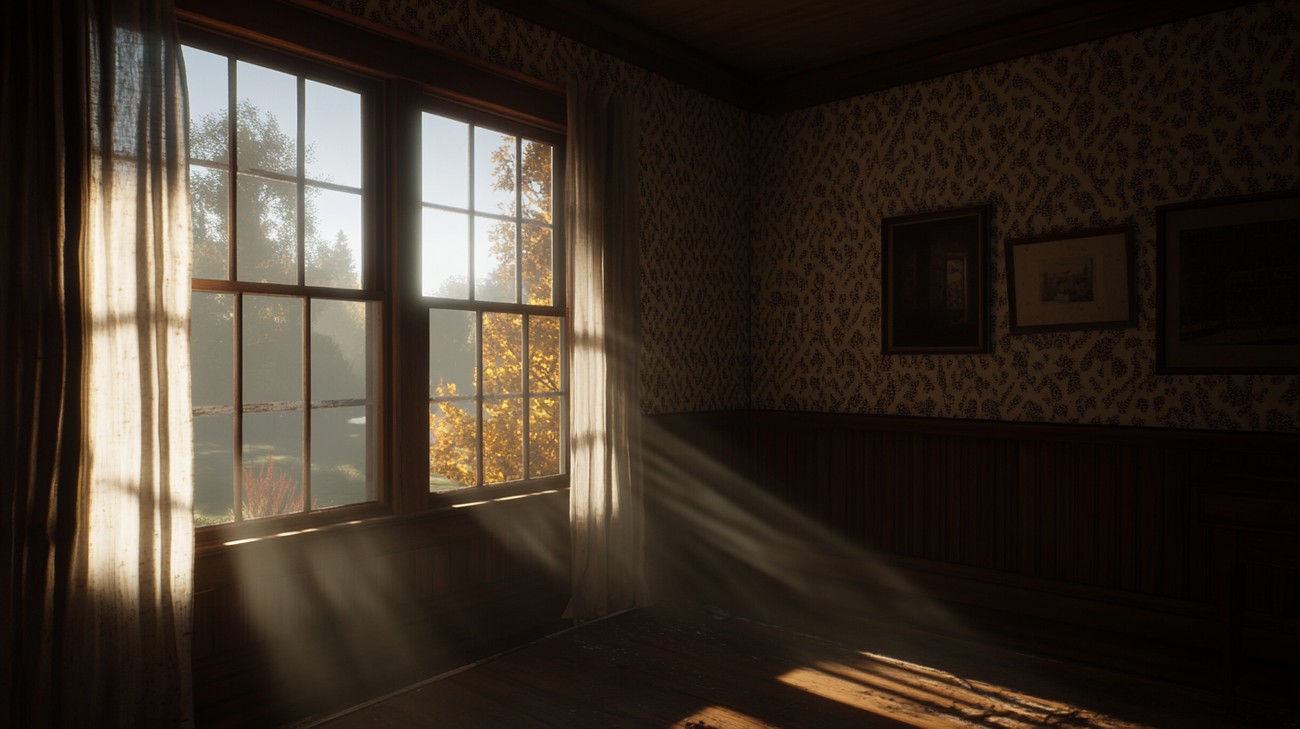
Frequently Asked Questions about Mold On Windows
What causes mold to grow on windows?
Mold spores are always present in the air, but they need certain conditions to grow. If your windows are often damp due to condensation, leaks, or high humidity in your home, these damp surfaces can attract mold spores, allowing them to thrive and grow.
Is mold on windows dangerous?
Certain types of mold produce mycotoxins that can cause allergic reactions and other health issues in some people. Symptoms may include sneezing, runny nose, red eyes, skin rash, and in severe cases, asthma attacks.
How can I prevent the growth of mold on windows?
To prevent mold growth on windows, try to keep your window surfaces as dry as possible. This can be achieved by improving ventilation in your home, using dehumidifiers or fans, or simply wiping down your windows regularly to get rid of condensation.
What are the signs of window mold?
Window mold may appear as black or green spots that grow in clusters. If left untreated, the spots will spread across the window surface. You might also notice a musty smell.
How can I remove mold from my windows?
Before starting, ensure you have protective gear on. This includes gloves, goggles, and a mask. Use a mixture of equal parts vinegar and water to scrub the mold away from the window with a hard-bristle brush. Rinse and dry thoroughly. If the mold persists, seek professional help.
Can I paint over the mold on windows?
Painting over mold is not advised as it does not kill the mold, but rather, it traps and hides it. If the underlying problem isn’t resolved, the mold will keep growing beneath the paint and eventually cause more damage.
Can the mold on my windows affect my indoor air quality?
Yes, the mold can affect your indoor air quality. Mold releases spores into the air which can float around your house, either being breathed in or settling on surfaces in your home.
How often should I clean mold off of my windows?
You should clean your windows as soon as you see any signs of mold. Regular cleaning and maintenance can help prevent mold growth.
Is it normal to have mold on windows?
It's normal for windows to have mold if conditions are ideal for growth, such as in high humidity areas. However, it's not something that should be ignored due to the potential health risks associated with some types of mold.
Does bleach kill the mold on windows?
Bleach can be effective in killing molds on nonporous surfaces. However, for porous surfaces, like wood window frames, bleach may not penetrate deep enough to kill the mold.
Can window mold spread to other areas in the house?
Yes, mold spores are airborne and can spread to other areas in the house, especially if the conditions for growth—warmth and humidity—are met.
What are some natural cleaning solutions I can use to remove mold from windows?
You can make a natural cleaning solution using either vinegar or baking soda. For vinegar, mix equal parts with water, and for baking soda, mix one-quarter of a tablespoon with water in a spray bottle.

Pros of Mold on Windows
While it may seem contradictory, there are a few potential benefits associated with the presence of mold on windows.
A Natural Part of the Ecosystem
Assists in Decomposition
Mold is a natural organism that plays a role in breaking down organic matter, including dead plants and trees. In the great outdoors, mold is critical to the ecosystem's function. It can even help break down certain materials often found on windows, like wooden frames and dust particles, making it an effective albeit an unorthodox cleaning agent at times.
Health Indicators
Indication of Moisture Issues
While not positive in themselves, the molds can serve as a visual and almost immediate warning sign for underlying humidity problems. If mold is growing on your windows, it's a clear indication that there's too much moisture in your home, and steps need to be taken to rectify it before the situation worsens. It thus offers a crucial opportunity to intervene early and guard against potential structural damage in your home, which could have been costly if left unchecked.
Cons of Mold on Windows
Despite the few 'advantages' of mold existence in our windows, there are many more potential negatives to consider. Molds can cause a variety of health and structural problems and are generally an unwelcome sight in our homes.
Health Concerns
Allergic Reactions
For many people, exposure to mold can lead to allergy symptoms—including sneezing, runny or stuffy nose, coughing, postnasal drip, itchy eyes, nose, and throat, and dry, scaly skin.
Respiratory Problems
The Institute of Medicine found evidence linking indoor exposure to mold with upper respiratory tract symptoms, including coughing and wheezing, in healthy individuals. Those with pre-existing respiratory conditions such as asthma or chronic obstructive pulmonary disorder (COPD), are likely to suffer even more serious symptoms, with mold potentially triggering asthma attacks or exacerbating COPD symptoms.
Potential for Toxic Mold
Some molds produce toxic substances known as mycotoxins. In high concentrations, mycotoxins can cause a range of health problems, including neurological problems and, in rare circumstances, death. Although it's less common for molds on windows to produce toxic levels of mycotoxins enough to cause these severe health problems, the potential risk adds further to the negative impact of mold in your home.
Structural Damage
Wood Decay
Many residential windows, particularly in older homes, have wooden frames. Mold feeds on organic matter, which includes the cellulose that makes up wood and paper products. Over time, the mold can eat away at your window frames causing them to weaken and decay, which can lead to costly repairs or replacements.
Damage to Window Seals
Mold can grow within the seals of double-paned windows, especially if there's a leak that lets moisture in. This can cause the seals to deteriorate, which makes your windows less efficient at keeping out cold air in winter and hot air in summer. Over time, this can increase your energy bills as your heating and cooling systems have to work harder to maintain a comfortable indoor temperature.
Unsightly Appearance
One of the more apparent negatives of mold on windows is the unappealing appearance. It can range from black or green spots to fuzzy, sprawling growths, all of which are likely not the aesthetic you're striving for in your home. Plus, if you're trying to sell your home, visible mold can be a significant deterrence for potential buyers, potentially lowering the home's value.
Increased Cleaning Effort and Maintenance
Regular Cleaning Needed
Windows with mold will require frequent and thorough cleaning to keep the mold at bay. This isn't an easy task, as it normally involves applying a mold-killing solution and scrubbing the area vigorously, wearing protective clothing to avoid contact with the mold.
Regular Checks Necessary
Even after cleaning, it will be necessary to frequently check the windows for the return of mold. This adds to the effort and time you need to invest in the maintenance of the windows, detracting from other household tasks or recreational activities.

Myths and Misconceptions About Mold on Windows
Mold on windows is an all too common occurrence and is often a cause for concern among homeowners. There's no doubt that it's unsightly and can be potentially harmful to health, but along with the facts, there are also many myths and misconceptions surrounding it. In this detailed section, we will address and debunk some of the most prevalent misconceptions about mold on windows.
Mold on Windows is Harmless
Fact: Mold on Windows Can Be Harmful
One of the most prevalent myths about mold on windows is that it is harmless. This is incredibly misleading.
While not all types of mold are dangerous to every individual, exposure to certain molds has been known to cause health complications, particularly in susceptible individuals such as those with allergies, asthma or immune deficiency. These problems can include skin and eye irritation, coughing, sneezing, and in some severe cases, respiratory distress.
Only Old Houses Get Window Mold
Fact: Any House Can Get Window Mold
It is also widely believed that only old houses get window mold. This is not true.
Mold growth is not limited to old houses. It can infest any structure, old or new, if the conditions are favorable. Mold, especially on windows, is usually the result of high humidity or condensation. Top-rated Sacramento Energy efficient windows in newer homes often trap moisture due to their tight seals leading to mold growth.
Window Mold is a Cosmetic Issue
Fact: Window Mold Can Indicate Deeper Problems
Another common myth is that window mold is merely a cosmetic issue. In fact, persistent mold can indicate deeper, hidden problems.
Window mold often indicates excess humidity or moisture, which can have deeper implications like a leak or poor insulation. It's not just what's on the surface that's a problem. The unseen moisture within walls and window frames can lead to structural damage in the form of wood rot and decay.
Bleach is the Best Way to Kill Window Mold
Fact: Bleach May Not Be The Best Solution
Many people believe that bleach is the ultimate solution for window mold, but this is not always the case.
While bleach can kill surface mold, it's not effective at attacking roots. These roots can run incredibly deep, particularly in porous materials like wood. Furthermore, using bleach can discolour or damage the material. Instead, consider using hydrogen peroxide, vinegar, or special mold cleaning solutions.
Painting Over Window Mold Will Solve the Problem
Fact: Paint Does Not Kill Mold
Some homeowners believe that painting over window mold will take care of the problem. This is absolutely false.
Painting might mask the mold visually, but it doesn't kill the mold. Without proper cleaning and treatment, the mold will continue to live underneath the paint, and in time, will cause the paint to peel and crack.
Mold Only Grows on the Inside of Windows
Fact: Mold Can Grow on the Inside and Outside of Windows
There's a widespread belief that mold only grows on the inside of windows. This is a misunderstanding.
Mold can grow on both the outside and inside of windows. Areas exposed to high humidity, condensation, or leaks are prone to mold growth. Moreover, if you can see mold on the window pane, there’s a good chance that mold is growing in other hidden locations, like window sills, frames, and channels.
All Window Mold is Black Mold
Fact: Different Types of Mold Can Grow on Windows
It's common to hear the term 'black mold', but it's incorrect to just label all window mold as black mold.
There are numerous types of mold that can grow on windows in varying colors such as white, green, brown, and yes - black. In fact, the infamous "black mold" - Stachybotrys - which has been linked with severe health problems, is actually very rare.
I Have Mold on My Windows, So My House Must Be Mold-infested
Fact: Window Mold Doesn't Always Mean a Mold-infested House
Finally, one of the most alarming misconceptions is that window mold automatically means you live in a mold-infested house.
Just because you have mold on your windows doesn't necessarily mean the problem is widespread. Windows are just more susceptible to condensation and thus, more prone to mold. However, it's essential to get a proper inspection done to be sure.
Addressing these myths and misconceptions about mold on windows is the first step towards tackling the problem effectively. Molds are silent invaders that slowly compromise the comfort, appeal, and safety of your home. Understanding the truth about window mold enables us to deal with the problem in the right way, ensuring a healthier and safer living environment.
Summary
From a daily living standpoint, dealing with mold on windows can be a bit of a headache. It occurs most often in areas with high levels of moisture and little ventilation. Not just that, it impacts both the health of the occupants and the aesthetics of the home. Moreover, it speaks volumes about the care and attention paid by the homeowners.
Mold on windows is not something to be brushed under the carpet. It poses health risks ranging from allergic reactions to respiratory issues, especially in people with weak immune systems. Therefore, regular cleaning and maintenance can go a long way in preventing its occurrence, and ensuring the health and wellbeing of your family.
Lastly, remember that it's not just about eradicating the mold that's already there. It's important to address the underlying causes that contribute to their growth on windows, like damp environments and poor ventilation. Essential oils, regular cleaning, and dehumidifiers can be beneficial. But most important is to address the root cause, ensuring that your living space is not conducive for mold growth in the first place.
About GVD Renovations & Remodeling
GVD Renovations & Remodeling is a well-established company, proudly serving the Roseville, California area for years now. We're known for transforming homes with thoughtful and professional renovations. Our team of experts are trained in all areas of home improvement—from kitchen and bathroom revamps, to exterior siding and roofing. Trust us, we've got the passion and skills to make your renovation dreams come true. So, why wait? Let's create something beautiful together.
This article is for general information only and not professional advice. Always consult a licensed contractor before making project decisions. Product details, specifications, or warranties may have changed since publication. Brand and product mentions reflect opinion, not endorsements or guarantees.
Tags: mold, windows, moisture,


